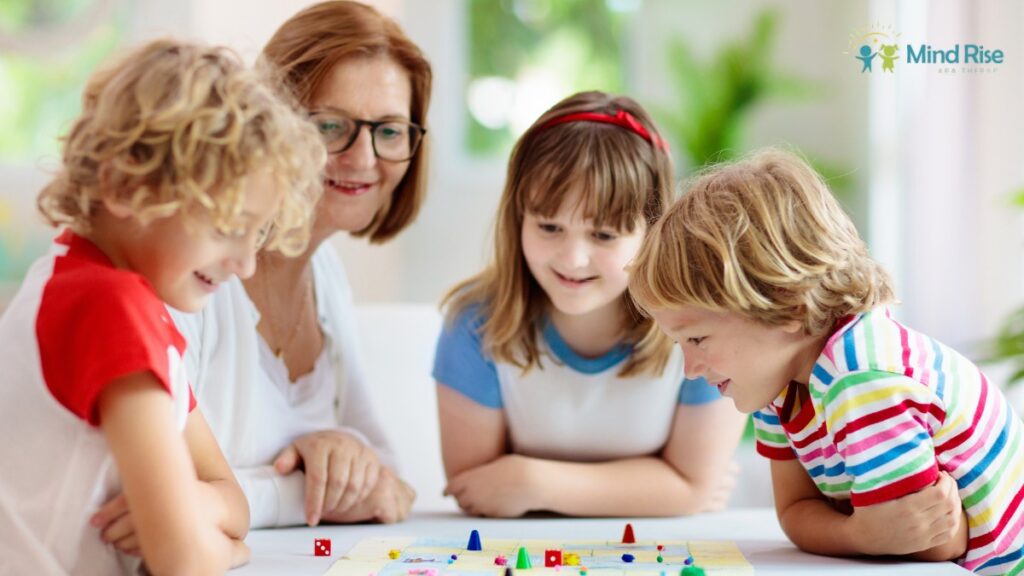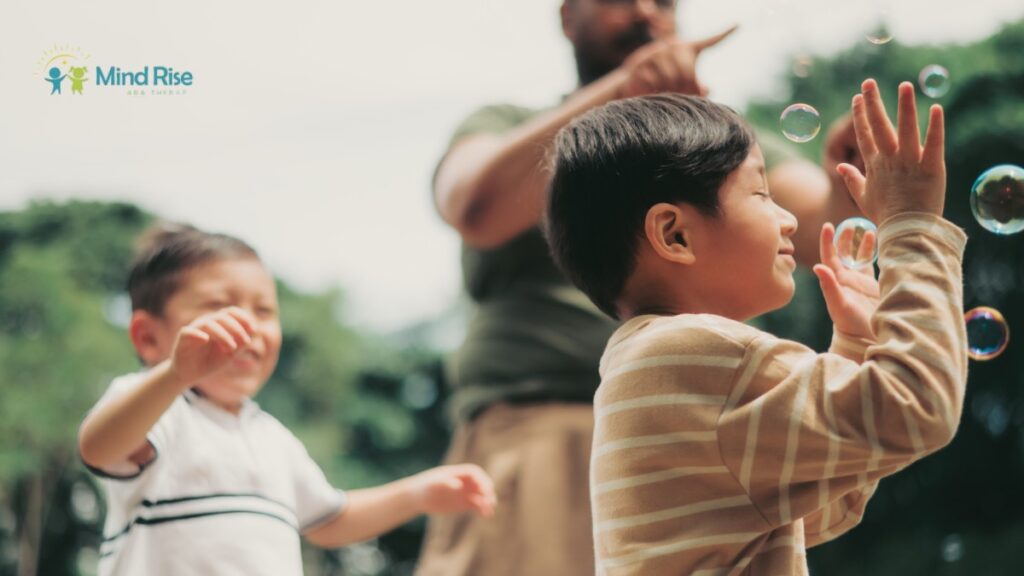Key Points:
- Games help autistic children develop social, sensory, and cognitive skills while having fun.
- The best autism-friendly games include sensory play, turn-taking activities, and structured tasks.
- Thoughtfully chosen games encourage communication, problem-solving, and emotional regulation.
Children with autism experience the world differently, and play is a powerful way to help them explore and grow. The right games can enhance social skills, fine motor abilities, and sensory processing—all while having fun! Let’s explore ten engaging autism-friendly games that make learning both exciting and meaningful.
What Are the Best Autism Game Ideas for Kids?
The best autism game ideas are those that encourage communication, sensory exploration, and social skills while maintaining structure and predictability. Some of the most effective games include sensory-based activities, turn-taking games, and simple problem-solving challenges.
Each child with autism is different, so choosing games that align with their strengths and preferences ensures they stay engaged while developing valuable life skills.
1. Sensory Bin Exploration
Hands-on play is a fantastic way to engage kids with autism, especially since many seek or avoid certain sensory experiences. A tactile bin allows children to explore various textures in a structured and enjoyable setting.
How to Play
- Fill a large container with textured materials like dried rice, beans, kinetic sand, or water beads.
- Bury small objects, letters, or numbers inside for children to uncover.
- Promote scooping, pouring, and sorting to improve fine motor coordination.
Why It Helps
- Helps children regulate sensory input, especially those sensitive to touch.
- Supports concentration, relaxation, and solo play.
- Strengthens motor and thinking skills through sorting and discovery.
2. Emotion Matching Game
Understanding and expressing emotions can be difficult for children with autism. Emotion-based games help them recognize facial expressions and connect emotions with real-world situations.
How to Play
- Use emotion flashcards or print out images of different facial expressions.
- Have the child match expressions with emotion words (happy, sad, angry, surprised).
- Take turns acting out emotions and guessing what they are.
Why It Helps
- Improves emotional recognition and social understanding.
- Encourages communication and nonverbal expression.
- Provides a structured way to discuss feelings in a safe environment.
3. Obstacle Course
Many children with autism benefit from movement-based activities to develop motor coordination and release energy. An indoor or outdoor obstacle course encourages physical play in a structured way.
How to Play
- Set up stations using pillows, tunnels, cones, or stepping stones.
- Give clear step-by-step instructions: “Crawl under the tunnel, jump on the mat, and throw the ball.”
- Use visual cues like picture cards to guide children through the course.
Why It Helps
- Improves gross motor skills and body awareness.
- Helps with following multi-step directions.
- Encourages physical activity in a predictable and enjoyable way.

4. Turn-Taking Board Games
Simple, structured board games help children with autism practice patience, turn-taking, and rule-following.
Best Board Games for Autism
- Candy Land – Simple, color-based movement game.
- Chutes and Ladders – Teaches turn-taking and cause-effect relationships.
- Connect Four – Encourages strategic thinking without complex rules.
Why It Helps
- Builds social interaction skills in a low-pressure setting.
- Reinforces the concept of waiting for turns.
- Strengthens problem-solving and attention to rules.
5. Freeze Dance
Music-based games help autistic children with sensory integration and movement coordination. Freeze Dance is a fun way to introduce listening skills and body awareness.
How to Play
- Play upbeat music and encourage kids to dance freely.
- Pause the music at random times—everyone must freeze in place.
- Use verbal or visual cues to guide movement (e.g., “Hop like a bunny”).
Why It Helps
- Encourages body awareness and coordination.
- Helps with impulse control and listening skills.
- Provides a fun and active way to engage with peers.
6. Picture Exchange Matching Game
Nonverbal children or those with communication challenges benefit from picture-based games that encourage expressive language skills.
How to Play
- Use PECS (Picture Exchange Communication System) cards or homemade picture cards.
- Have the child match objects to corresponding pictures (e.g., toy car to a picture of a car).
- Encourage requesting by having the child trade a picture for an item.
Why It Helps
- Develops early communication skills for nonverbal children.
- Encourages object recognition and word association.
- Supports functional communication growth.
7. Imitation Play (Copy Me Game)
Many children with autism learn best through imitation. Copycat games encourage engagement and teach new actions or words.
How to Play
- Perform simple movements (clap hands, jump, wave) and say, “Copy me!”
- Use toys or props for imitation (stack blocks, push a toy car).
- Gradually introduce new skills through play.
Why It Helps
- Encourages social engagement and joint attention.
- Supports motor imitation and language learning.
- Helps with following directions in a structured way.
8. Simple Hide and Seek
A modified version of Hide and Seek helps children practice spatial awareness and turn-taking in a safe, predictable way.
How to Play
- Start with an object-hiding version (hide a toy and give clues).
- Progress to people-hiding but with simple rules (hide in the same room).
- Use verbal cues like, “I’m behind something blue!”
Why It Helps
- Encourages problem-solving and listening skills.
- Supports predictability and rule-following.
- Helps build social engagement in a fun way.
9. Sorting and Categorizing Game
Sorting objects by color, shape, or category helps develop cognitive and organizational skills.
How to Play
- Provide objects like toy animals, blocks, or buttons.
- Give sorting prompts: “Put all the red blocks together.”
- Add levels of challenge with pattern matching.
Why It Helps
- Strengthens classification and cognitive skills
- Encourages attention to detail and logical thinking.
- Provides structured, independent play opportunities.

10. Bubble Popping Game
Bubbles are a great tool for engagement, sensory play, and social interaction.
How to Play
- Blow bubbles and encourage the child to pop them with hands or feet.
- Give simple commands: “Pop the big one!” or “Catch one on your hand.”
- Turn it into a turn-taking game to promote social skills.
Why It Helps
- Enhances hand-eye coordination.
- Provides calming sensory input.
- Encourages social interaction in an engaging way.
Support Your Child’s Growth with ABA Therapy at Virginia
Using structured autism game ideas can help children build essential life skills while having fun. However, many children need additional support in areas like communication, behavior, and social interaction.
At Mind Rise ABA, we provide individualized ABA therapy in Virginia to help children with autism build essential skills through structured, play-based learning. If you’re in Virginia, contact us today to discover how our evidence-based interventions can help your child thrive.

